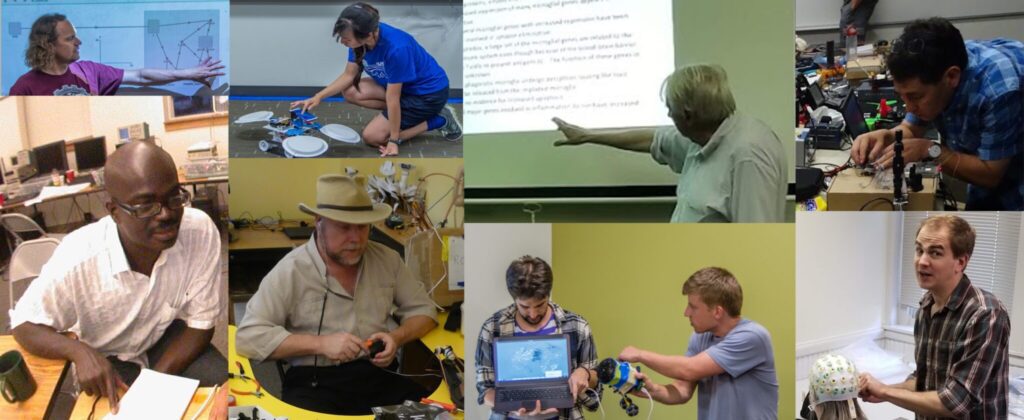Community Resources
Events Calendar
Find or post upcoming seminars, talks, and panels from across the neuromorphic world.
Resources and Tools
Learn about dozens of software packages, sensors, platforms, and more to enhance your project. Or submit your own.
News and Blogs
Read or submit news articles, announcements, and opinion pieces. Updated weekly.
Videos
Find or submit videos of conference talks, seminars, and other events. More than 300 videos already in our database.
Books and Journals
Read about topics related to neuromorphic engineering and post books that others may value.
Jobs
Discover or post jobs across the globe.
World Map
See the people, companies, and groups working in the field right now, and add yourself to the list.
Other Communities
Networking Neuromorphic Engineers
NeuroPAC was launched in 2021 as an NSF-supported effort under the AccelNet (Accelerating Research through International Network-to-Network Collaborations) program led by the University of Maryland and Johns Hopkins University. Its goal is to network neuromorphic engineers with computational neuroscientists, roboticists, and computational theory and perception researchers to advance the foundations of Neuromorphic Intelligence.
Our Mission
Our mission is to link international experts in neuromorphic engineering with computational neuroscientists, roboticists, control theorists, and researchers of perception internationally to set the foundations for building systems that can robustly process real-world signals in time and adapt to changes. NeuroPAC will facilitate the development of new methods and approaches for intelligent system design and prepare the next generation of leaders in neuromorphic science and technology.
About This Network
Artificial Intelligence is becoming ubiquitous in modern life. To build artificial systems under the current AI paradigm, large amounts of energy are required for computing and sensing. This causes environmental problems, pollution, and challenges to small-sized autonomous systems, as well as privacy issues. The field of neuromorphic science and technology offers an alternative by seeking to understand the principles of biological brains and build on their basis artificial systems using low-power hardware and software solutions. While its advantages have been demonstrated, further advances are necessary and require common computational tools and principled experimental approaches.
NeuroPac links experts in neuromorphic engineering with computational neuroscientists, roboticists, control theorists, and researchers of perception internationally to set the foundations for building systems that can robustly process real-world signals in time and adapt to changes. This network of networks will facilitate the development of new methods and approaches for intelligent system design and educate the next generation of leaders in neuromorphic science and technology. As different industries adopt neuromorphic hardware, society will have access to new applications, such as in computing on cell phones, neuroprostheses, intelligent hearing aids, and smart sensory systems with predictive capabilities.





